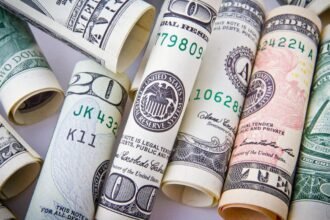Many Americans may wonder whether they have too much or too little money in their checking accounts. A recent Federal Reserve survey sheds new light on the average and median checking account balances in the U.S., offering helpful benchmarks for consumers. However, experts say you should ultimately determine the right amount for your personal situation.
According to the 2019 Survey of Consumer Finances from the Federal Reserve Board, the average U.S. household had $10,618 in their checking account. The median balance was substantially lower at just $2,000, indicating the average was skewed upward by some households with very large balances.
Financial advisors generally recommend keeping one to two months’ worth of living expenses in your checking account so you have enough to cover bills without keeping too much earning minimal interest. However, your ideal balance depends on your specific circumstances.
Examining the Federal Reserve Data
The Federal Reserve conducts its Survey of Consumer Finances every three years to provide insights into Americans’ financial health and behaviors. The 2019 edition offered an updated look at checking account balances across U.S. households.
Some key findings:
- The average checking account balance was $10,618.
- The median was only $2,000, much lower than the average.
- Older households tended to have higher balances, with those 75+ averaging $17,299.
- College-educated households had over twice the average, at nearly $25,000.
- Married couples averaged $14,000 vs. under $6,000 for single adults.
The wide gap between the average and median suggests a skewed distribution, with relatively few households having very high balances elevating the average. Financial experts say the median often provides a better gauge of the “typical” account balance.
“Seeing that big difference between average and median checking balances tells us households’ experiences vary widely,” said Michelle Singletary, personal finance columnist. “While some are maintaining five-figure balances, half have less than $2,000.”
Determining the Right Amount for You
Financial advisors generally suggest a checking account cushion of one to two months’ living expenses, but say your ideal amount depends on your specific budget and preferences.
“As a starting point, add up a typical month’s bills and spending, then double that for a two-month buffer,” advised Eliza Badeau, CFP. “But adjust based on factors like income variability and comfort level.”
For example, freelancers with fluctuating paychecks may opt for a larger cushion. Those who prefer cycling money between checking and high-yield savings could keep less on hand.
“Run through scenarios of emergencies or income disruptions so you know a month or two of reserves is sufficient,” counseled Kyle Moore, CFP. “But don’t keep much more than needed since excess funds could earn higher returns elsewhere.”
High Interest Savings Options
Since checking accounts generally pay minimal or no interest, you minimize potential earnings by keeping large balances there. Interest rates on savings accounts and certificates of deposit have risen significantly over the past year, making these more attractive options for cash reserves beyond your checking needs.
Rates on online savings accounts now top 4% in many cases, vs. 0.06% on average checking accounts. Although withdrawal restrictions apply on savings accounts, you can easily move money to checking as needed.
One-year CDs also offer yields approaching 4%, and allow deposit access after maturity. Laddering multiple CDs can provide steady liquidity.
“Take advantage of today’s savings and CD rates to earn income on extra cash, while keeping enough in a checking account to avoid shortfalls,” advised Gary Bell, banking analyst.
Customizing Your Checking Cushion
While the Federal Reserve data offers helpful benchmarks, financial experts emphasize determining your ideal checking balance involves assessing aspects like:
- Monthly income and expenses
- Payment timing and cycles
- Income stability and reliability
- Expense fluctuations
- Savings and investment balances
- Interest rates on savings vehicles
- Comfort level having cash on hand
“Aim for the sweet spot where your checking cushion calms your money worries but isn’t excessive for your situation,” said Bell. “Review the balance a couple times a year and adjust as needed.”
Carefully calibrated checking accounts, combined with higher-yielding savings and CDs, can help Americans maximize their cash management. While the Federal Reserve found a wide range of account balances, focusing on your own financial profile is key.





